| Tone Number | Description | Pitch | Tone Letter |
|
|---|---|---|---|---|
| 1 | high level | 55 | ˥ | ma ("mother") |
| 2 | high rising | 35 | ˦˥ | ma ("hemp") |
| 3 | low falling rising | 214 | ˨˩˦ | ma ("horse") |
| 4 | high falling | 51 | ˥˩ | ma ("scold") |
| Tone Number | Description | Pitch | Tone Letter |
|
|---|---|---|---|---|
| 1 | high level | 55 | ˥ | ma ("mother") |
| 2 | high rising | 35 | ˦˥ | ma ("hemp") |
| 3 | low falling rising | 214 | ˨˩˦ | ma ("horse") |
| 4 | high falling | 51 | ˥˩ | ma ("scold") |
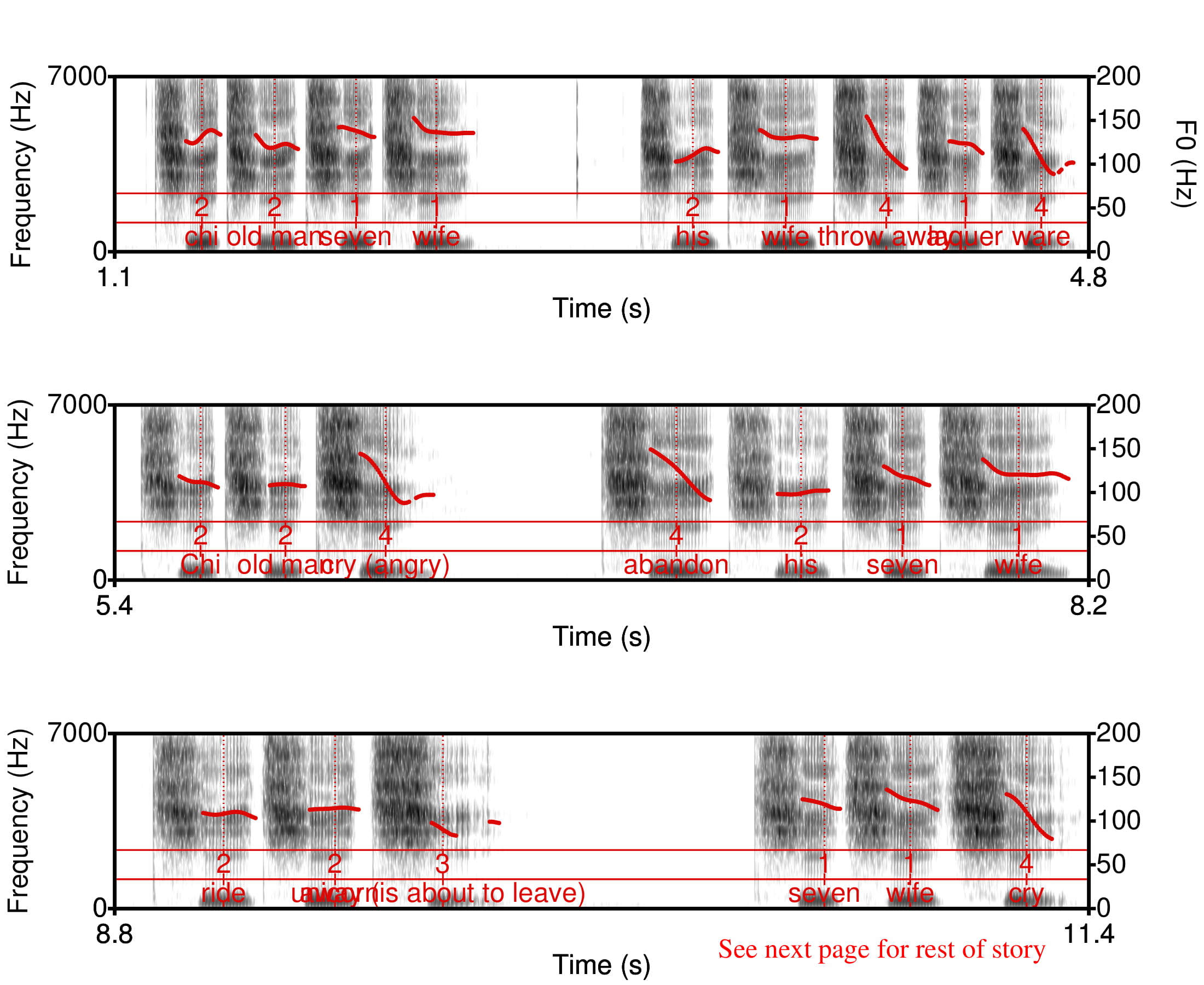
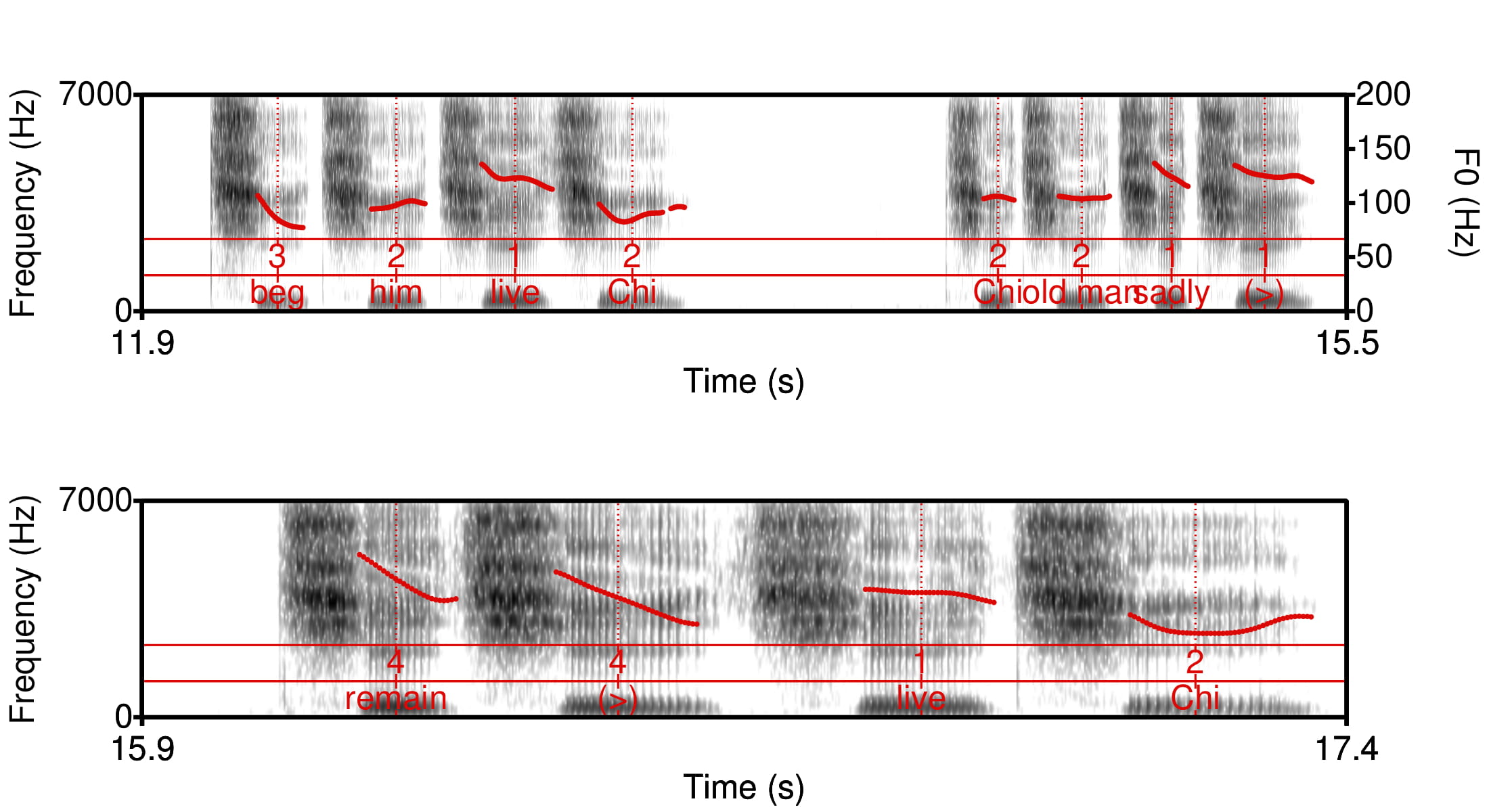
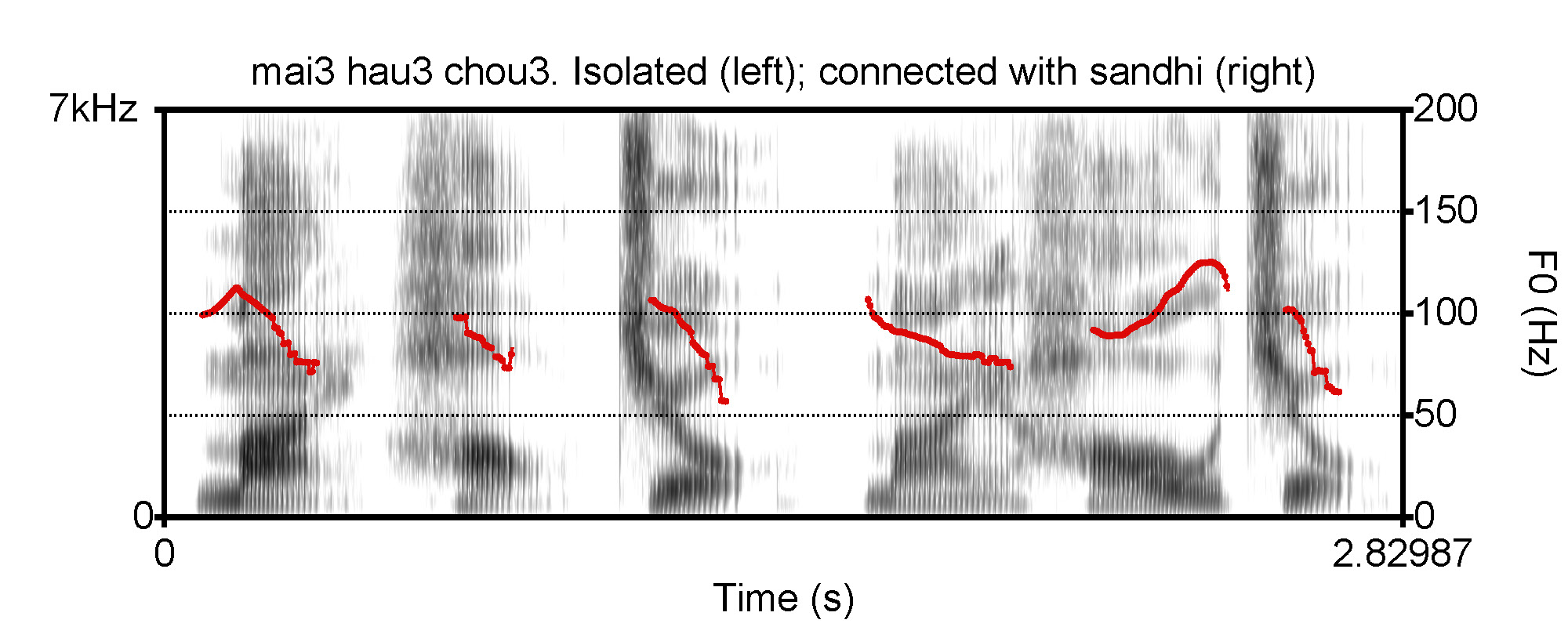
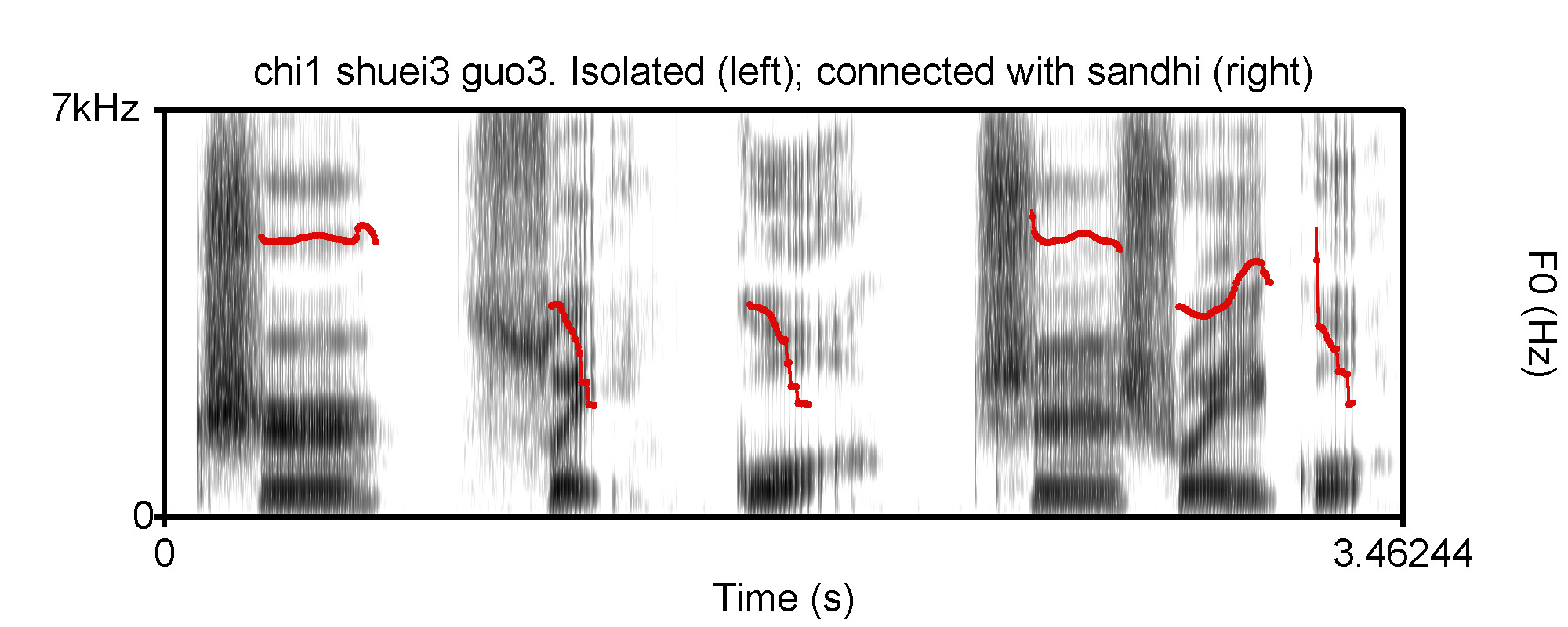
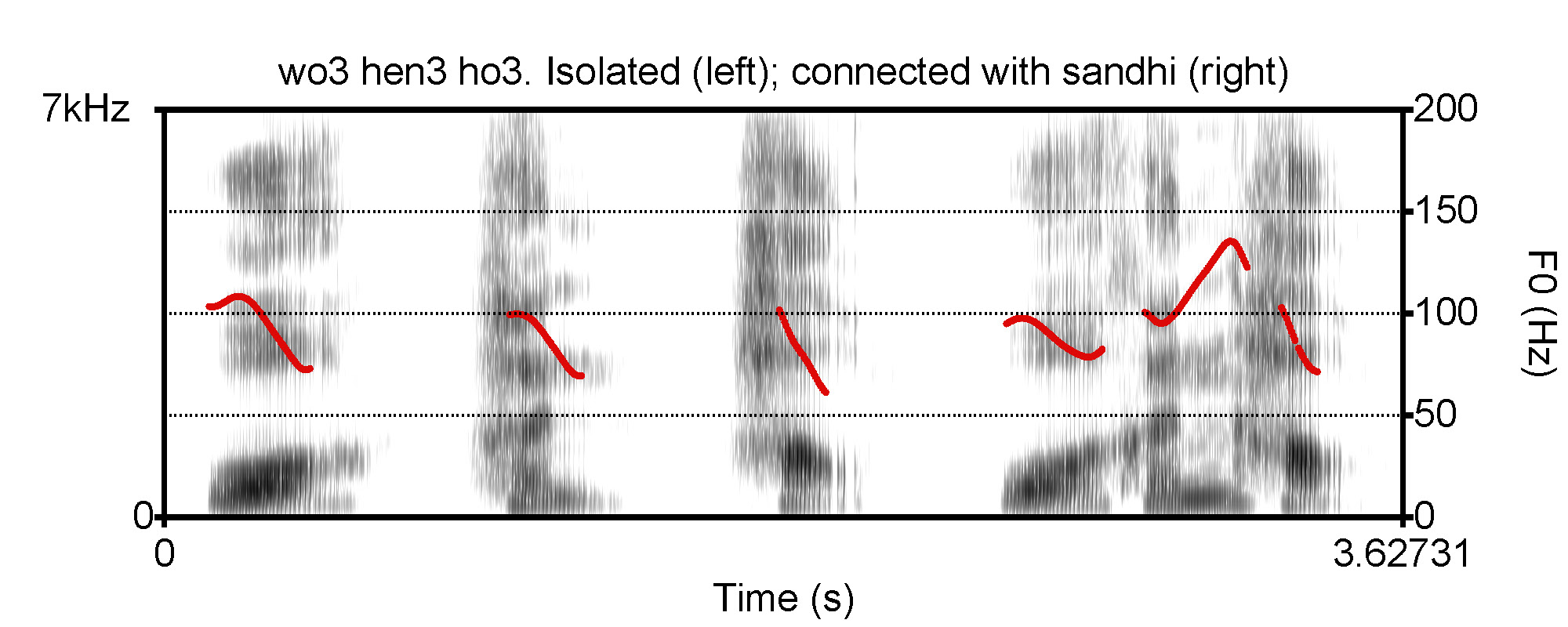
| Rang1-Rang1 ("to shout") |
Qio2-Rau ("beg for spare") |
Da3-Rau ("to interrupt") |
Uei2-Rau ("to encircle") |
| Rang1-Rang1 ("to shout") |
Qio ("beg for spare") |
Da3-Rau ("to interrupt") |
Uei2-Rau ("to encircle") |
| tao pa ɚ | > | tao pa˞ | ("hilt") |
| ɕiao tɕi ɚ | > | ɕiao tɕiɚ | ("chickling") |
| ɕiao tʂu ɚ | > | ɕiao tʂuɚ | ("pigling") |
| ao ɚ | > | ao˞ | ("coat") |
| xuən ɚ | > | xuɚ | ("soul") |
| xə tɕhyən ɚ | > | xə tɕhyɚ | ("sociable") |
| tan xuaŋ ɚ | > | tan xua˞̃ | ("egg yolk") |
| ɕiao ɕiuŋ ɚ | > | ɕiao ɕiu˞̃ | ("little bear") |